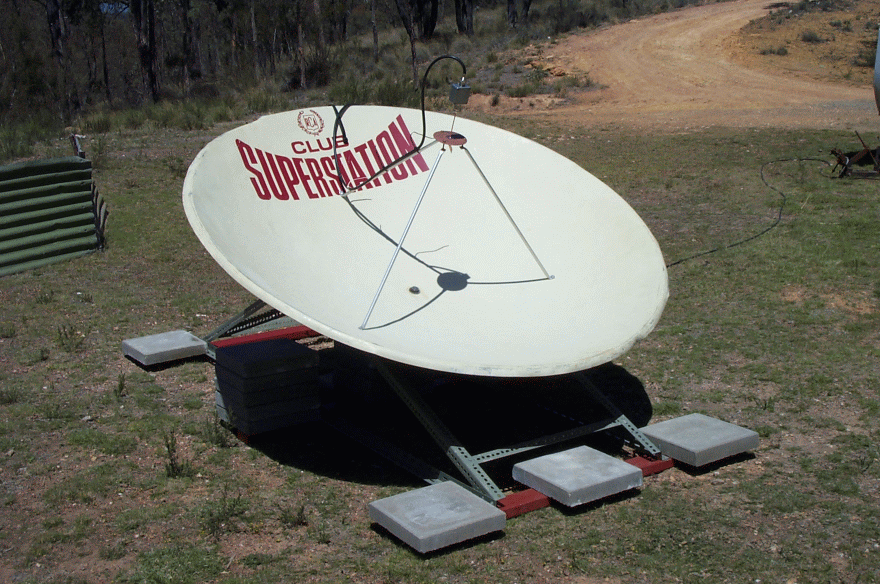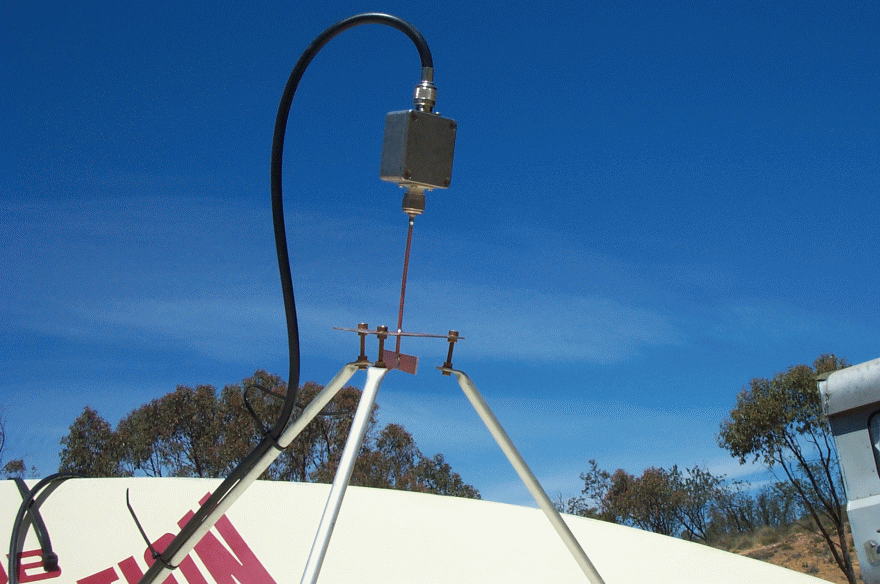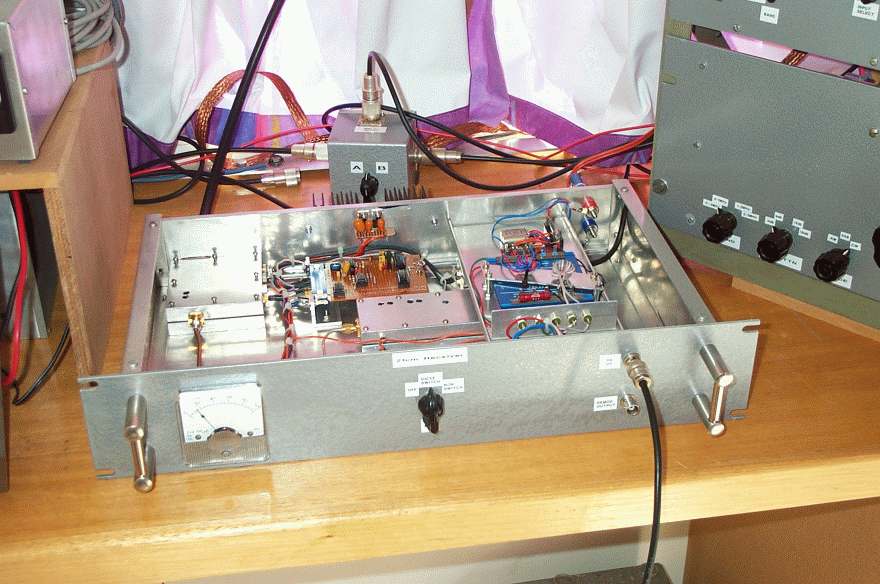
The dish is a surplus 1.7 m unit mounted on a temporary structure oriented due north.
I can adjust the elevation by changing the length of the support members. Currently
it is set to an elevation of 68 degrees for sun transits to test the system. I hope
to obtain a much bigger dish for more serious radio astronomy and make it steerable
in elevation at least.

The feed is a temporary device to get the system going. It is a dipole made from printed
circuit board and semi-rigid coax mounted a quarter wavelength from a circular reflector.
The reflector also serves as the mount. The struts from the dish surface are too close to
the dipole and I will change the design as time permits. The feed was built in about 45
minutes to get on the air and test the system...

My home-made equipment

The receiver is a single conversion superhet Dicke switch design, I used F = 141 MHz, BW ~ 8 MHz.
The input is switched between a servo noise source and the antenna and the detected signal is feed
to a phase sensitive amplifier and integrator which feeds back to the noise source. So the receiver
acts as a 'null detector' and any gain variations shouldn't have any effect of the signal output.
At least that's the theory.... Of course the LNA at the antenna is outside the feedback loop, so any
gain changes there due to temperature changes will be evident in the receiver output.